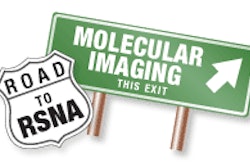The research, led by Dr. Hossein Jadvar, PhD, an associate professor of radiology, evaluated 41 men with known castrate-sensitive metastatic prostate cancer. The subjects received FDG-PET/CT scans and were followed prospectively for the primary outcome end point: change in treatment from androgen-deprivation therapy to chemotherapy or death, if that occurred first. This initiation of chemotherapy or death was defined as time to hormonal treatment failure (THTF).
PET images were used to tally the number of lesions and calculate the maximum standardized uptake value (SUVmax) of the most active lesion, as well as the sum and average SUVmax of all lesions.
The median THTF among the 41 patients was 26 months, with a 24-month THTF-free probability of 51%.
Based on that finding and other calculations, Jadvar and colleagues concluded that FDG-PET/CT is useful in predicting time to hormonal treatment failure in men with castrate-sensitive metastatic prostate cancer.



















